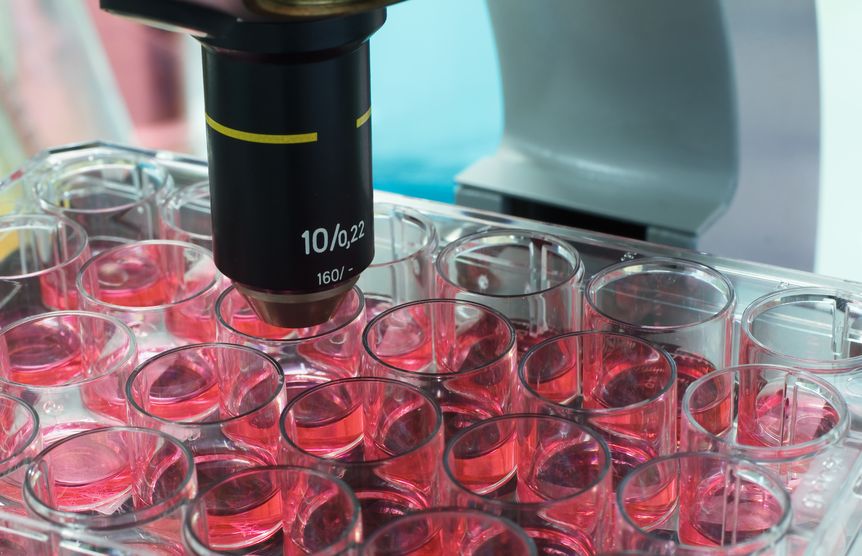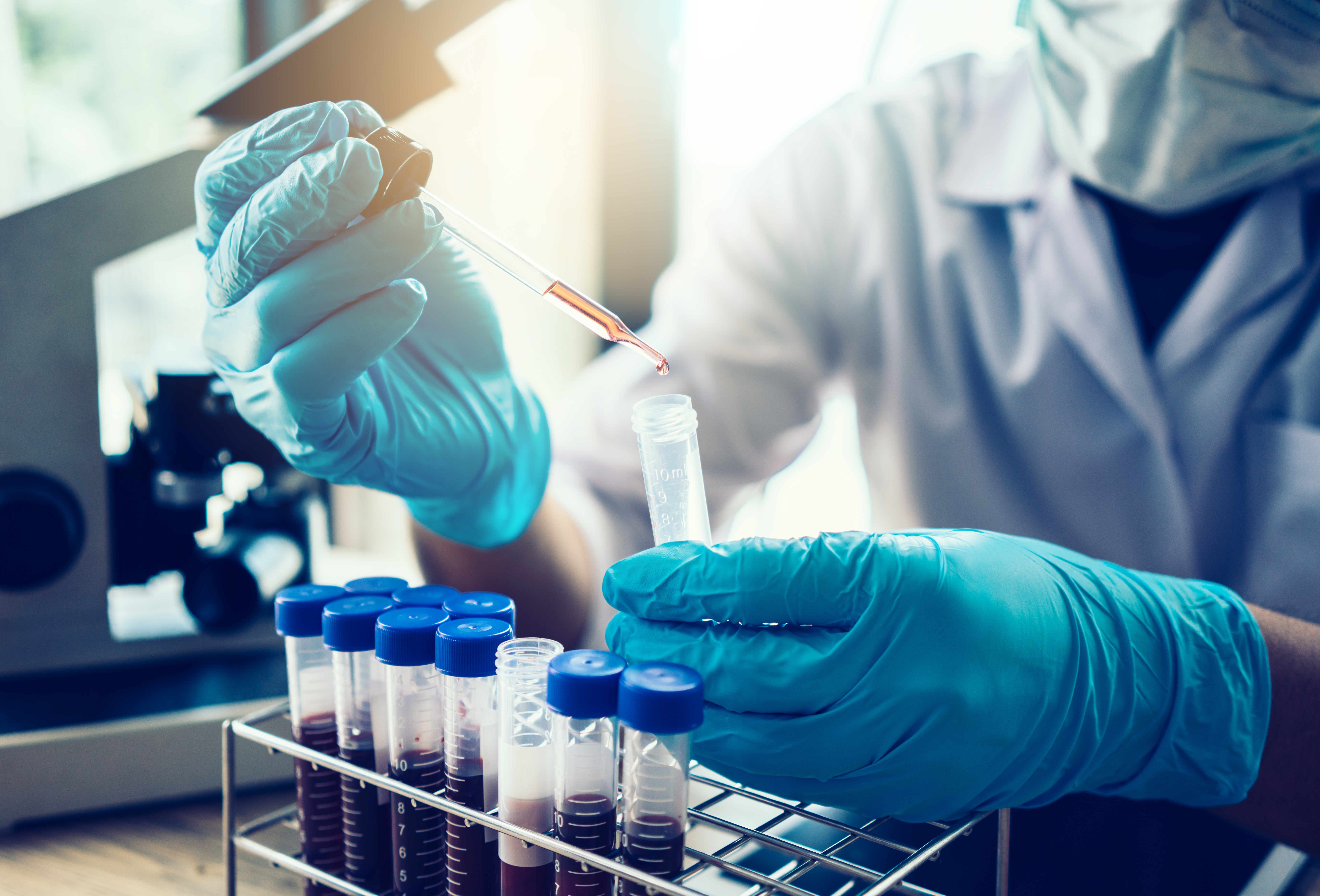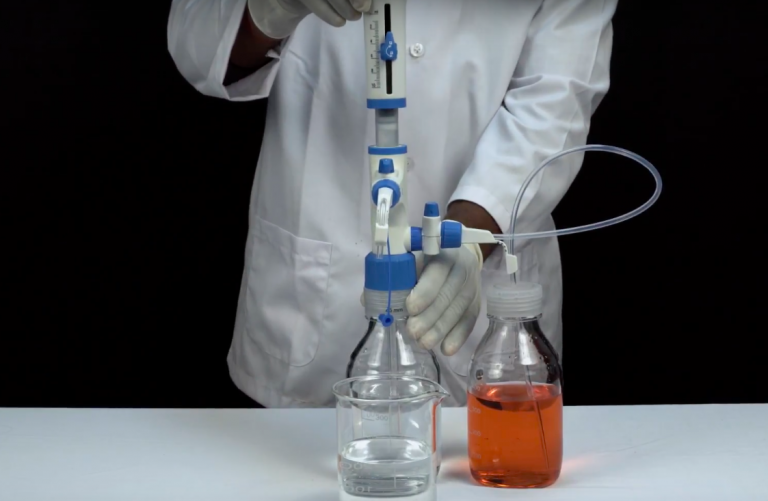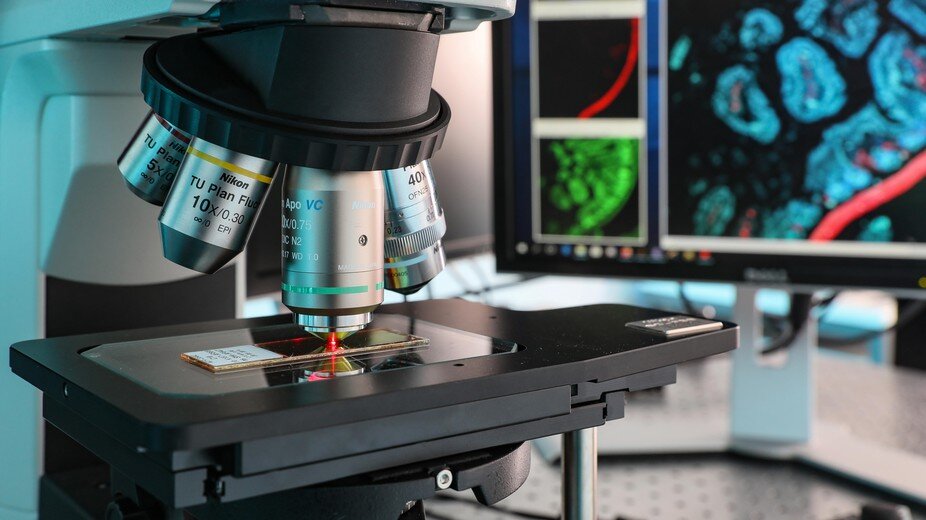 Marine Barnabé
Marine Barnabé
Assays which allow for the quantitative measurement of cell death during cell culture are crucial to any experiment involving cell lines or ex vivo cellular clinical samples. In pre-clinical drug discovery, potential drug candidates are usually tested against mammalian cell lines such CHO or Vero in order to assess any cytotoxic effects the compound could exert on the body’s own cells. In more fundamental research where the effects of perturbation factors are tested on cellular phenotype, gene, or protein expression, the cytotoxic effects of the perturbing factor must first be investigated via a cell viability assay.
The viability assay most commonly used throughout the world is the MTT assay, first described by Tim Mosmann in 1983. This colorimetric assay uses reduction of a yellow tetrazolium salt (3-(4,5-dimethylthiazol-2-yl)-2,5-diphenyltetrazolium bromide, or MTT) to measure cellular metabolic activity as a proxy for cell viability. Viable cells contain NAD(P)H-dependent oxidoreductase enzymes which reduce the MTT reagent to formazan, an insoluble crystalline product with a deep purple color. Formazan crystals are then dissolved using a solubilizing solution and absorbance is measured at 500-600 nanometers using a plate-reader. The darker the solution, the greater the number of viable, metabolically active cells.
Performing an MTT assay is easy enough, but there can be pitfalls if one is unfamiliar with the protocol. Below is a brief description of the steps:
- Plate 1,000-100,000 cells per well in a 96-well plate and incubate with the appropriate stimulus for the desired time (usually 6-48 hours).
- Remove medium and wash cells with PBS.
- Add MTT made up in medium to a final concentration of 0.5 mg/mL.
- Incubate for 30 minutes to 4 hours at 37°C, until intracellular purple formazan crystals are visible under microscope.
- Remove MTT and add solubilizing solution (see notes below) and triturate.
- Incubate at room temperature or 37°C for 30 minutes to 2 hours, until cells have lysed and purple crystals have dissolved.
- Measure absorbance at 570 nanometers.
Interpreting results
The absorbance reading of the blank must be subtracted from all samples. Absorbance readings from test samples must then be divided by those of the control and multiplied by 100 to give percentage cell viability or proliferation (see formula below). Absorbance values greater than the control indicate cell proliferation, while lower values suggest cell death or inhibition of proliferation.

Tips and troubleshooting
Reagents
- MTT is light-sensitive, and should be kept in the dark as much as possible. It is always a good idea to cover MTT bottles with foil.
- Make sure you do not contaminate your MTT stock. If it is green or blue (it should be yellow), you can assume it has either been contaminated by cells or bacteria, or exposed to light. If properly looked after and stored at 4°C, your MTT stock can last up to 18 months.
- Always handle MTT using the appropriate personal protection equipment, as it is can cause skin and eye irritation.
- To dissolve formazan crystals, you can use DMSO, acidified isopropanol, or SDS. Test to find out which works best for your experiment.
Absorbance values
- Your absorbance readings should fall between 0.75 and 1.25. If your readings are too low, try increasing the number of cells plated or the incubation time, and make sure your cell culture conditions are appropriate. On the other hand, plating too many cells per well will yield very high absorbance readings, as will contamination by yeast or bacteria.
- To determine the optimal cell number per well, prepare and plate serial dilutions of cells in medium from 106 to 10³ cells/mL. This will help you decide which number of cells yields appropriate absorbance values.
General tips
- Always include a positive control (untreated cells) and a blank (well containing medium only), and plate these and samples in triplicate.
- Always wash cells with PBS (step 2) before adding MTT in order to remove dead cells and cellular debris, which could give inaccurate results.
Limitations of the MTT assay
The sensitivity of an MTT assay is lower than that of fluorescent or luminescent assays, particularly with cells that do not readily proliferate or cells with low metabolic activity. Furthermore, certain chemical compounds interfere with the reduction of MTT to formazan and are therefore not easily compatible with MTT assays. These include polyphenols, vitamin A, coenzyme A, and DTT (dithiothreitol). It should also be noted that both exposure to MTT and formation of formazan crystals are cytotoxic and cause damaging changes to cellular morphology.
If performed correctly, an MTT assay is an extremely useful part to many experiments. However, it may not always be the best choice for your particular needs. The next article in this series will details alternatives to the MTT assay.
Quartzy is the world’s No. 1 lab management platform. We help scientists easily organize orders, manage inventory, and save money. We’re free and always will be. Visit Quartzy.com or reach out at info@quartzy.com.
Interested in writing for The Q? Send us an email!
Share this:
Tags: science news

Marine Barnabe
Marine is a Master's student at the University of Cape Town, South Africa, and specialises in mass spectrometry-based proteomics and HIV-tuberculosis co-infections. She is an avid horse-rider and loves to cook, craft, and read.




